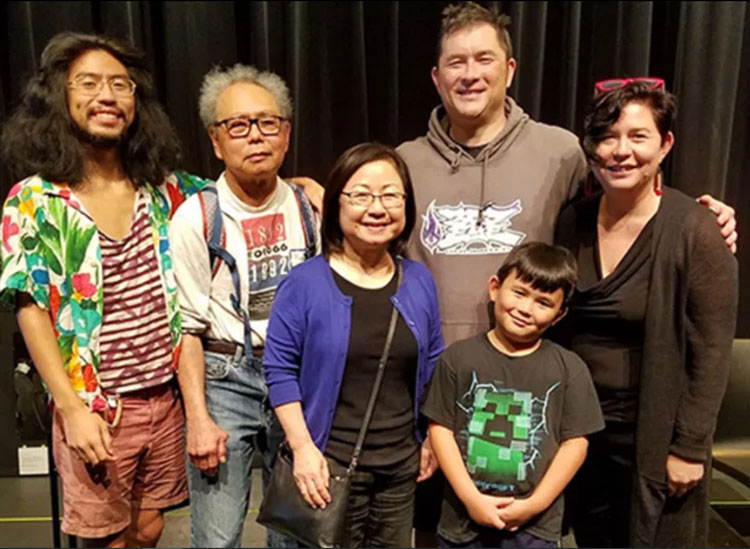By David Yamaguchi, North American Post
Many words have recently been written about Bob Shimabukuro, longtime columnist for the “International Examiner.” First, Ron Chew painted an intimate portrait of Bob. The two knew each other well from their overlapping stints as editors and writers there. Next, Chris Talbott of the Seattle Times, sketched a big-picture view of Bob’s life in its entirety, from his asthmatic childhood in Hawaii, through his days as a craftsman of exquisite wooden furniture in Oregon, and ending with his contributions to Seattle community life.
What remains to be described is the great gift that Bob left the rest of us, who knew Bob at a middle distance from his writing. For in addition to his IE column, Bob wrote the book, “Born in Seattle,” about the Seattle-originated campaign for Japanese-American redress. A slim 158-page paperback published by UW Press (2001), it captures the behind-the-scenes nitty gritty of how local Nisei and Sansei activists began the successful national campaign to get the US government to right its wrongs to JAs during World War II. The culmination of their efforts included passage of the Civil Liberties Act of 1988, sending a letter of apology to incarceration survivors with a check for $20,000, and funding of public education about this dark chapter of American history.
In writing “Born in Seattle,” Bob, together with other writers of his vintage, helped to complete the written record of the WWII story of JAs, involving first-hand interviews with Nisei, who were young adults at the time of the war.
Bob’s book also emphasizes how writers and activists tend to be different kinds of people, who are essential complements of one another. Without activists—who are out front, peacefully protesting in the streets—the world would not change. But without quiet and contemplative follow-up by writers, those who come later would have no way of understanding how the world was changed, nor of the sacrifices required on the parts of the participants.
What I most remember about reading “Born in Seattle” is how one Nisei protagonist first termed Bob a “Hawaii Sansei ignoramus.” As a member of this largely post-war generation, how could he possibly hope to understand WWII- era JA history, much of which was still unwritten in the 1980s and 1990s? The Hawaiian adjective emphasized how Bob knew even less about the camps than Seattle Sansei, whose parents and relatives had been in them.
That Bob went from that modest beginning to writing the standard reference on the origin of the redress campaign simply shows what is possible. Today, we can see that his being at a distance from the story probably gave him the interest and objectivity needed to write about it.
One critical measure of a life is how much will be remembered about a person in two generations’ time, and by how many. Owing to “Born in Seattle,” Bob will be remembered. This is especially so given present increasing interest in African-American reparations for slavery and later injustices, where the JA redress campaign is a template (Kamna Shastri, South Seattle Emerald, Apr. 7).








